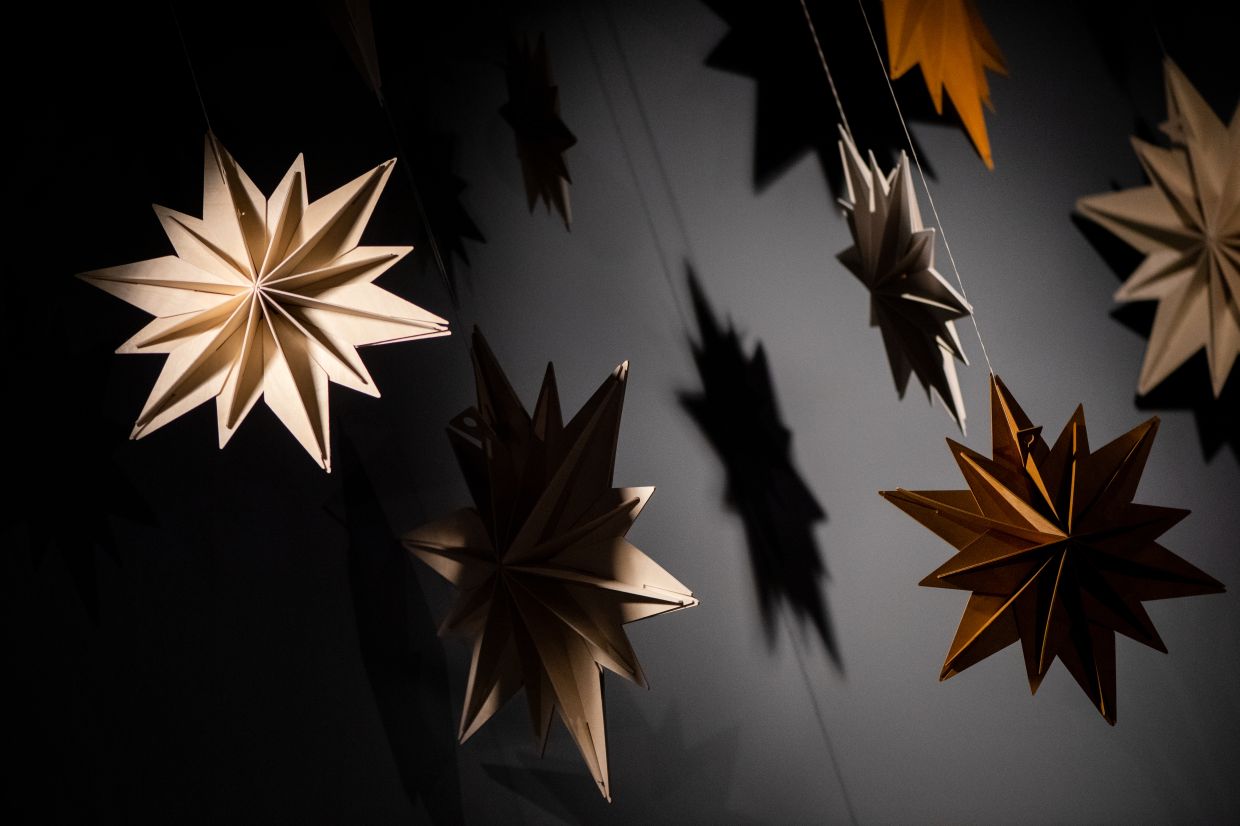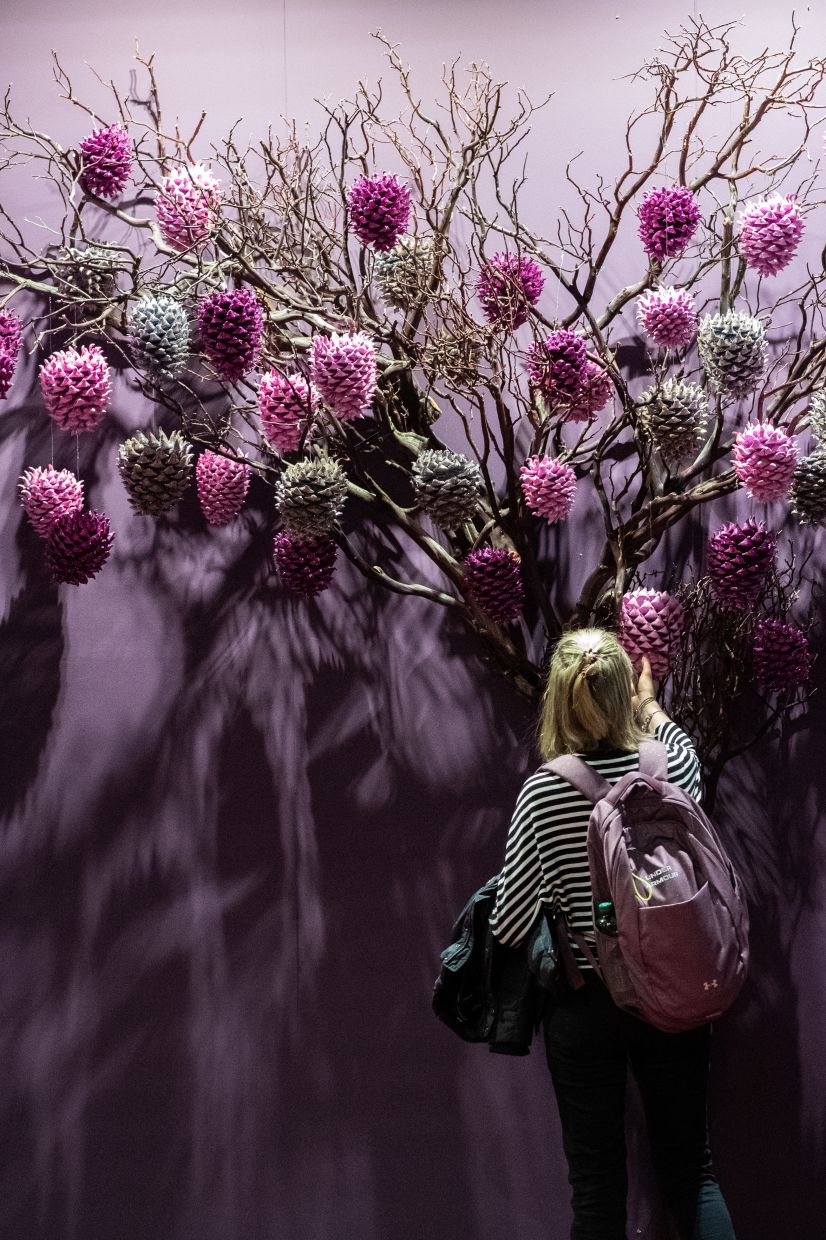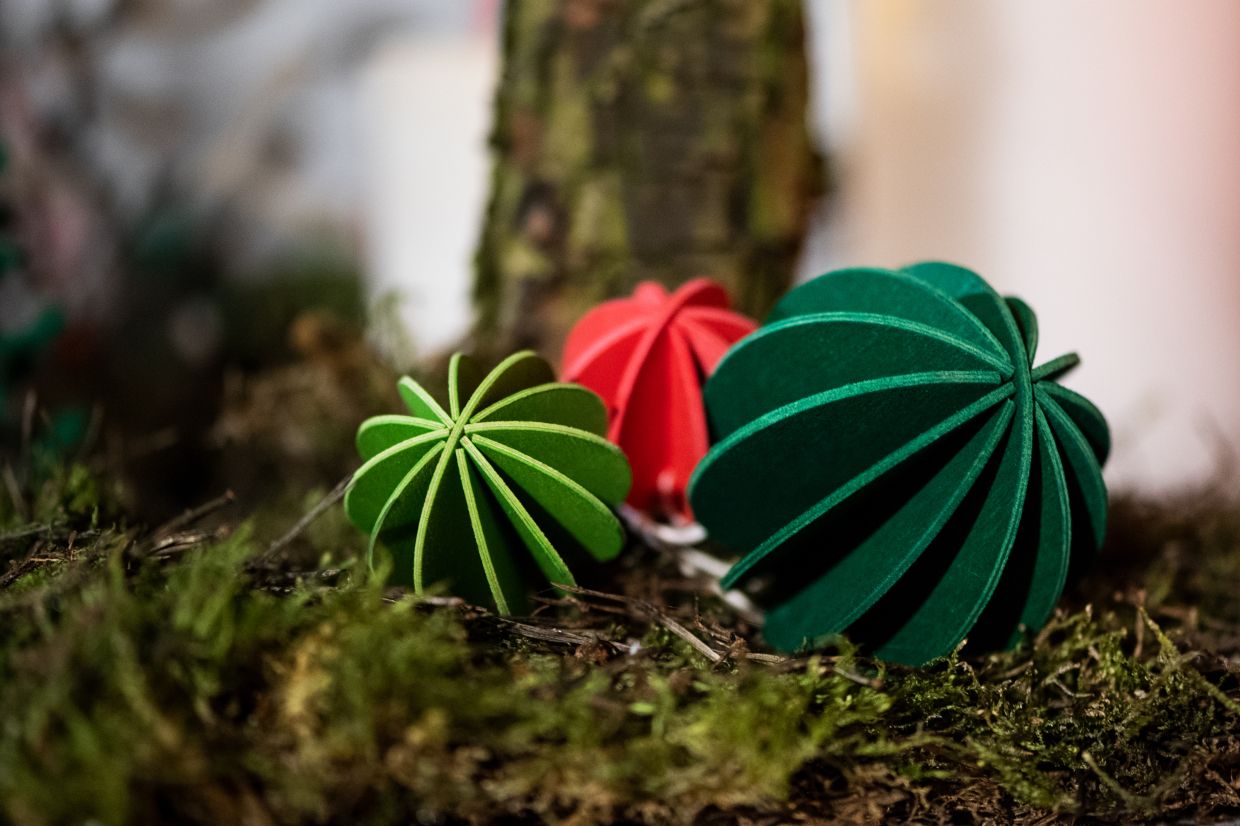Moss baubles and mushrooms are one among the latest nature-themed decorations this year. Photos: Franziska Gabbert/dpa
This year's Christmas decorations may well have steered away from all things traditional. Instead of bright colours and glitter, festive decorating is now all about sustainability – at least at one of the biggest Christmas industry fairs in the world.
At this year's Christmasworld in Frankfurt, Germany, decorations made from natural materials were everywhere: moss and felt baubles, versions wrapped in hemp string and ornate pendants made from thin wood.
Instead of plastic baubles and mass-produced junk, you find plant shoots thoughtfully placed in transparent spheres or pine cones on evergreen branches that can entirely replace the Christmas tree. The ornaments, which are often very subtle in colour, can be beautifully complemented with the decorations you already have at home – such as traditional red baubles.
Combining old and new is also popular now, says Julia Uherek, division manager for the Christmasworld fair in Germany, where a culture of Christmas ornaments has been nurtured since the bauble was invented here in the 1830s.
"This combination is in keeping with the current mood, as people aren't looking to purchase completely new Christmas decorations for sustainability and cost reasons. Rather, they want to keep what they already have, and use that."
So you need products that "can be easily integrated into the existing look of the decorations or a highlight that sets the tone for a small change", says Uherek. "For example, something marbled or graphic that stands out among beige tones."
Her trend conclusion for this year: "It's not like in the past when there was a new trend every year and you felt like you had to buy lots of new things." Sustainability and a proximity to nature are more than just trends, she says. They will remain important.
The mushroom trend
Gabriela Kaiser, a trend analyst based in Germany who specialises on Christmas comes to the same conclusion: "The forest has long served as an inspiration in many countries, especially when it comes to winter decorations. Pine cones on cushions and as stand-up decorations, or figures of rabbits, foxes and deer for the windowsill.
"We are currently riding a mushroom and toadstool wave," says Kaiser. "This is usually a theme for autumn, but the toadstool (decoration) can now be found all year round.
"It's a pretty weird development," Kaiser admit. "It comes from a young, hip scene. You enter a kind of hallucinogenic world with some of the designs." At the same time, the mushroom comes from the forest, suggesting an urban longing for nature. "Several worlds basically come together during product development." You can find mushrooms and toadstools in purple and pink, with a funny design, but also "as a more natural, traditional design based on the forest".
Papier-maché - or at least something similar
What else is happening in Germany's Christmas industry? "We are seeing lots of paper decorations, which we haven't had for a long time," says KaiserShe is currently seeing a rise of decorations made from honeycomb paper in Europe. This thin paper is given a structure that, when opened, resembles a honeycomb in cross-section. It's great for creating three-dimensional handicrafts.
"You can also find decorations based on the snowflakes people used to cut out of paper as children," Kaiser says. "But the pieces don't have any creases from folding as you can now buy them laser cut."
Something new you can find in stores are baubles with a papier-maché look. "At first you think the bauble is made of paper – and some are. But many are made from a different material, such as recycled cotton," says Kaiser.
"It's a very exciting material for decorations. Papier-maché baubles are very light, so you can hang them on your Christmas tree." Papier-maché also looks different from the usual glass baubles. "Combining the two gives you a completely new, fresh look."
Kaiser recommends combining baubles made of recycled materials with "wooden ornaments and other things that have a natural, eco look".
These baubles mainly have subtle, reduced colours and "are not quite as dazzling as you might be used when it comes to Christmas decorations".
Kaiser speaks of a baking paper optic, with soft beige and brown tones. – dpa















